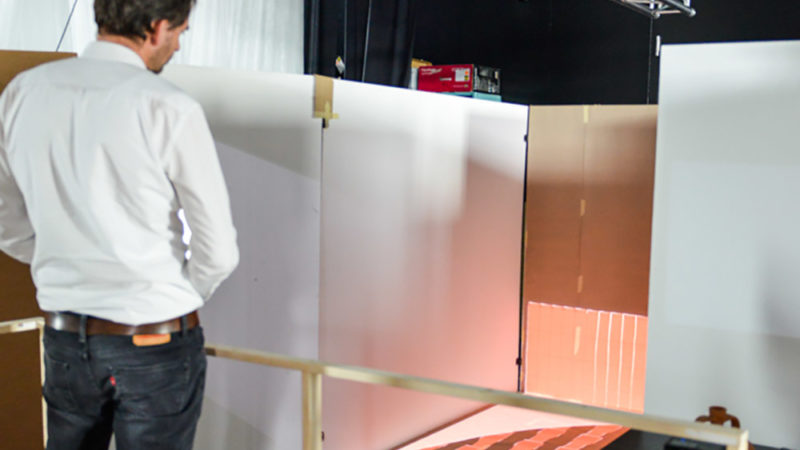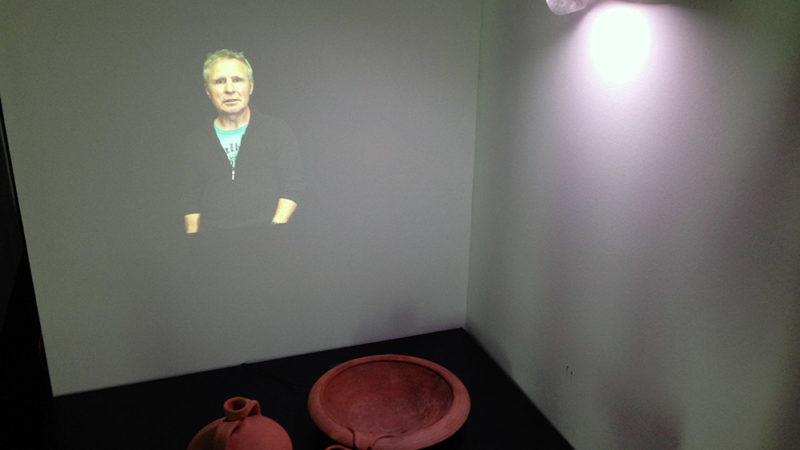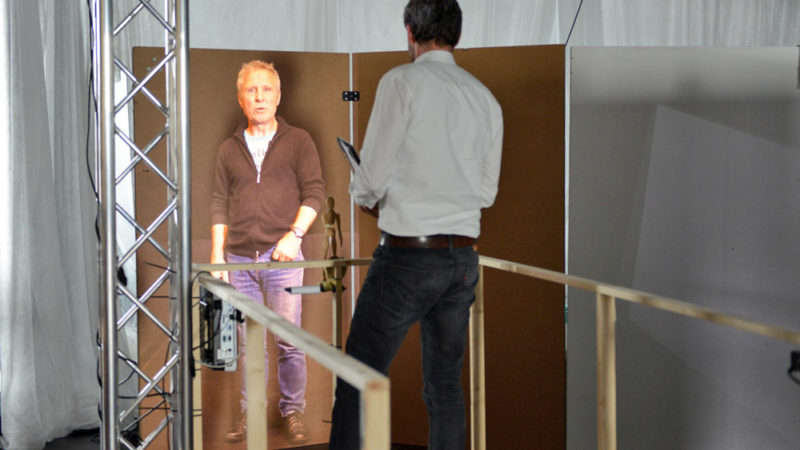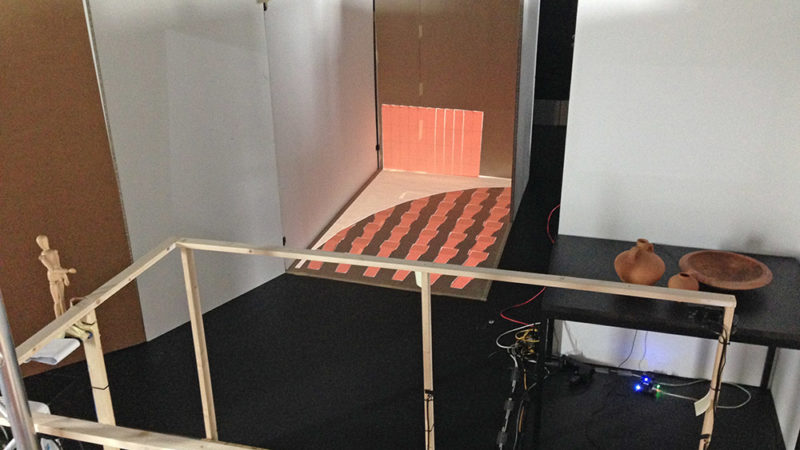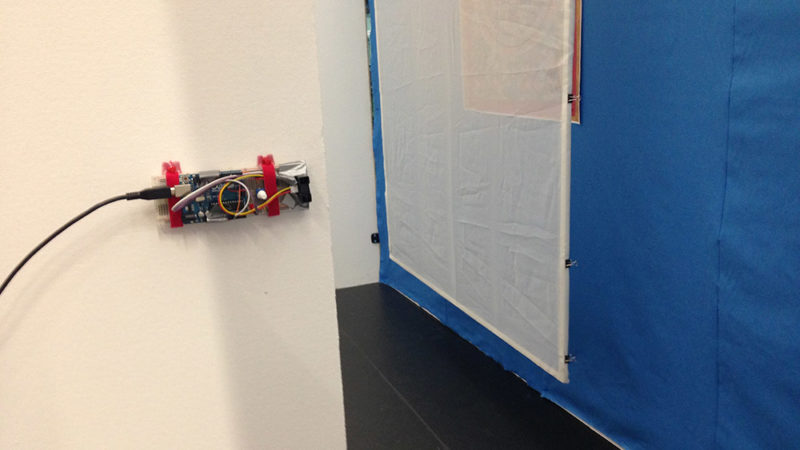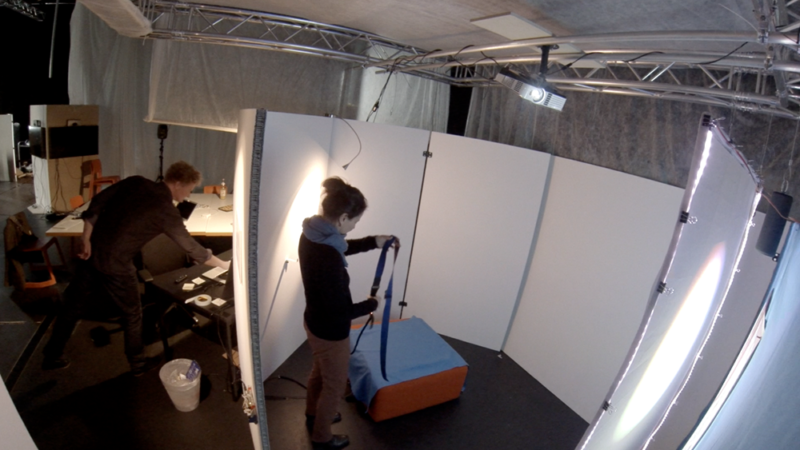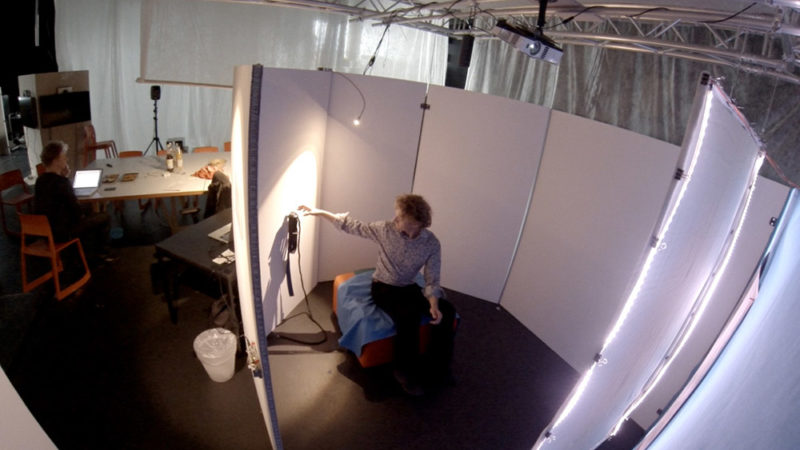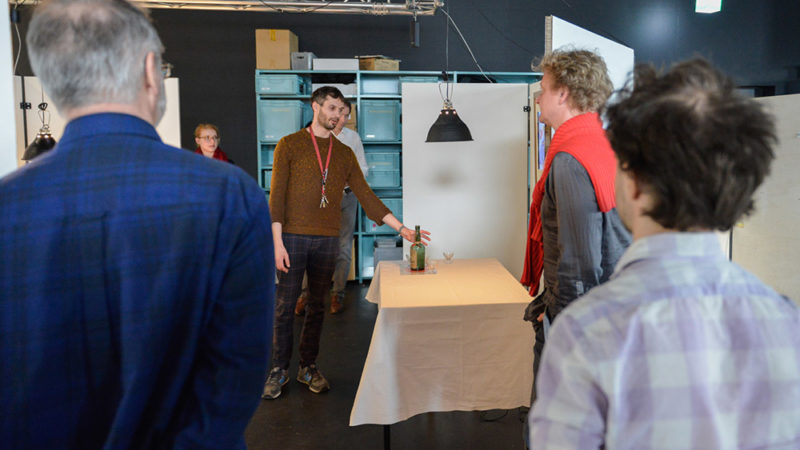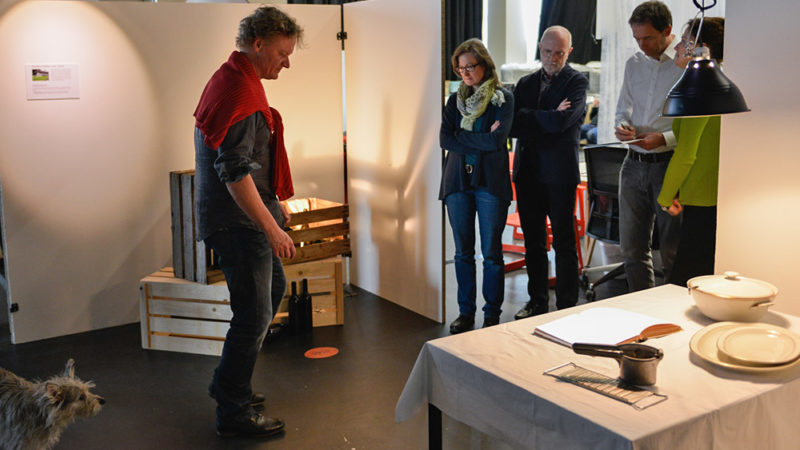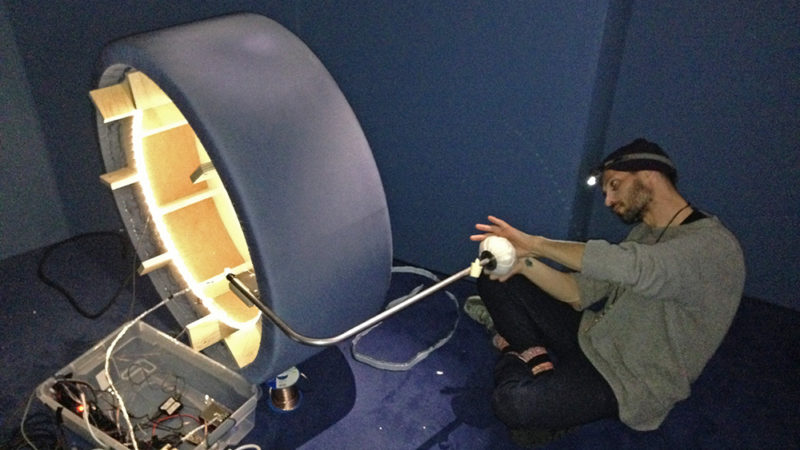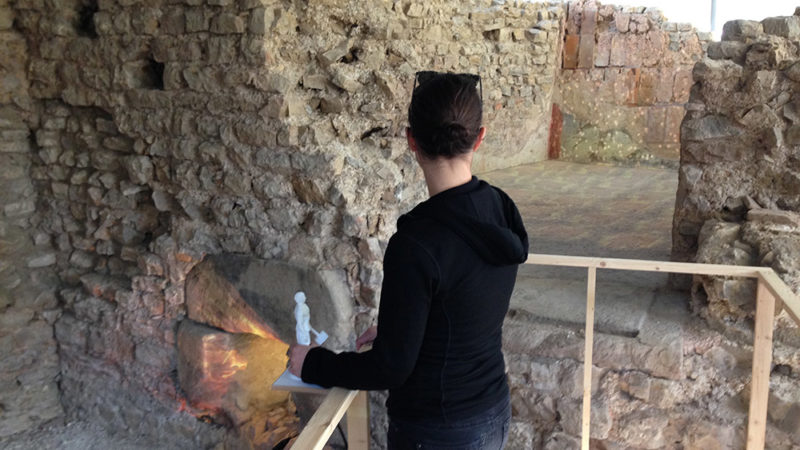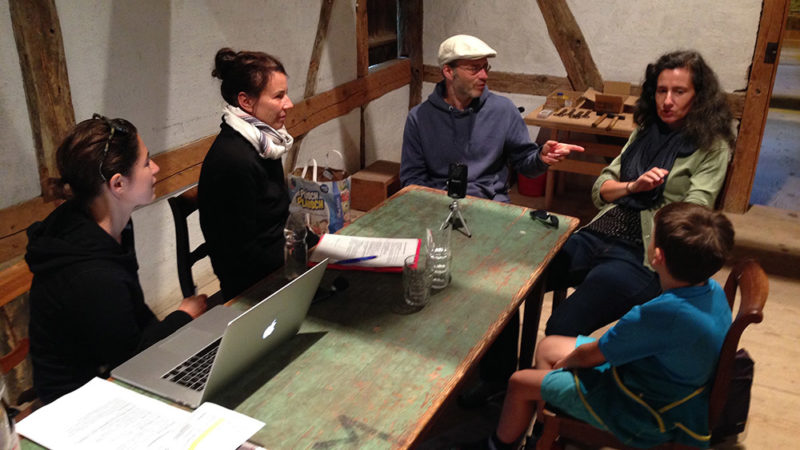Scenario development and evaluation
The presented project examined the application potential of ubicomp and tangible interaction for knowledge transfer, exhibition design and museum operations. We aimed to identify suitable contents, concepts and media approaches and to develop modular tools that are necessary for exhibition-making with ubicomp interaction and technology. We therefore developed systems that detect user behavior and accordingly process and display dynamic contextual information. Besides the technical implementation we were concerned with the design approach, interaction concepts, use of media, narrative and comprehension, and are motivated by questions of scenography and museology: How can physical exhibits be mediated and dramaturgically staged without the implementation of visible user interfaces and decoupled, separate information layers? What kind of information and formats are adequate for which interaction concepts and design approaches and how do visitors and operators accept and comprehend the approach?
Three prestigious museums – Museum der Kulturen Basel, Swiss Open-Air Museum Ballenberg and Roman City of Augusta Raurica – were involved in the research project. They have in common that they all exhibit objects and rooms that function as staged knowledge containers and can therefore be extended by means of ubiquitous computing. They offered interesting case studies that served the project as epistemic installations with specific exhibition requirements, concepts and technological approaches. Before the visitor evaluations in the museums we carried out lab-based usability studies. As a simplified version of the on-site visitor evaluation they served for a first investigation of aspects such as: spatial orientation, interaction access, media implementation, information processing and comprehensibility. We observed and video recorded the behavior of design experts and conducted semi-structured interviews.


